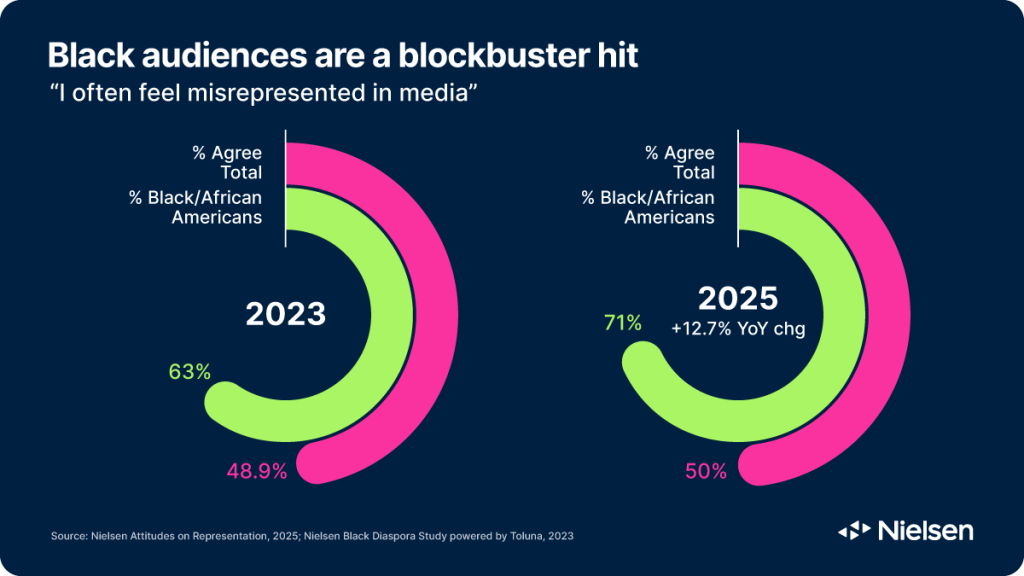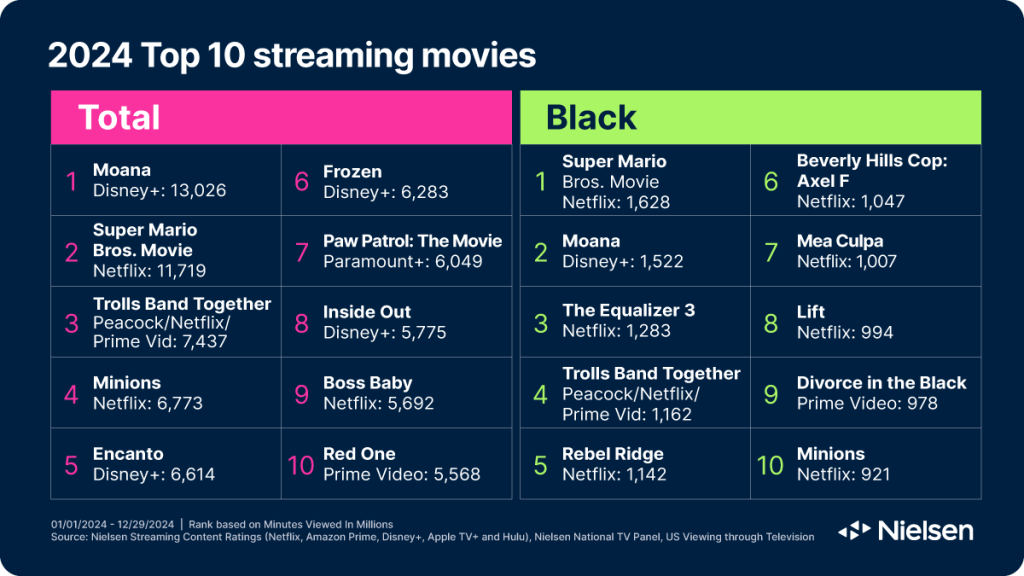Black Americans are 65% more likely to head to the movies during opening weekend, according to Nielsen Scarborough. But multiply that with a near insatiable demand to have the identities, cultures, aspirations and experiences of the Black community represented through media? Now that’s a blockbuster strategy.
The recent record-breaking release of Sinners, the new original movie directed by Ryan Coogler and starring Michael B. Jordan, debuted to an opening weekend of acclaim, as well as industry coverage that moved the goalpost on how success is defined for an original film in today’s media landscape. The movie builds on the success of other recent hit films immersed in Black culture and history, such as One of Them Days and The Woman King, and highlights a pattern around the viability of inclusive storytelling.
Again and again, Nielsen data shows that Black America is a driving force in the audience, consuming more media and across more platforms than nearly any other segment. And African American cultural influence also spans the globe to influence trends. Despite this, according to a recent Nielsen study, 71% of Black audiences often feel misrepresented in media, compared to half of audiences overall and up significantly from the 63% of Black audiences who felt misrepresented in 2023.

More inclusive content can be a winning strategy for content creators and advertisers. The best part? Data also shows that meeting the unmet demand for inclusion doesn’t isolate other audiences. A recent Nielsen study showed 87% of U.S. viewers have at least some interest in content that features talent outside their own identity group. In fact, the latest Hollywood Diversity Report from UCLA showed that, on average, two out of five viewers were white for movies with casts that were 50% or more Black, Indigenous, or People of Color (BIPOC). The report also outlined growth in every other audience segment from historically excluded populations as representation in the cast increased.
Said another way, inclusion brought more audiences along. This pattern is evident in the streaming content landscape as well as in theaters. The most streamed films from last year for Black viewers include a variety of genres and identity groups taking the lead. The top 10 list includes multiple titles that don’t breakthrough when reviewing the most streamed content overall, underscoring the draw that centered stories can deliver.

Advertisers are tapping into the opportunity presented by these underserved audiences, with the Nielsen Annual Marketing Report detailing that 40% of global marketers planned to increase their cinema ad budgets. And the opportunities for brands extend beyond the big screen, as streaming now represents 42.4% of all ad-supported TV viewing according to Nielsen’s The Gauge. Audiences are demonstrating through their box office power that centered storytelling can double their share of the audience. All that’s missing is the steady flow of content investment to meet the consumer demand.
For more information on the power of Black audiences, download our report, Engaging Black audiences: How brands impact, grow and win with inclusion.



